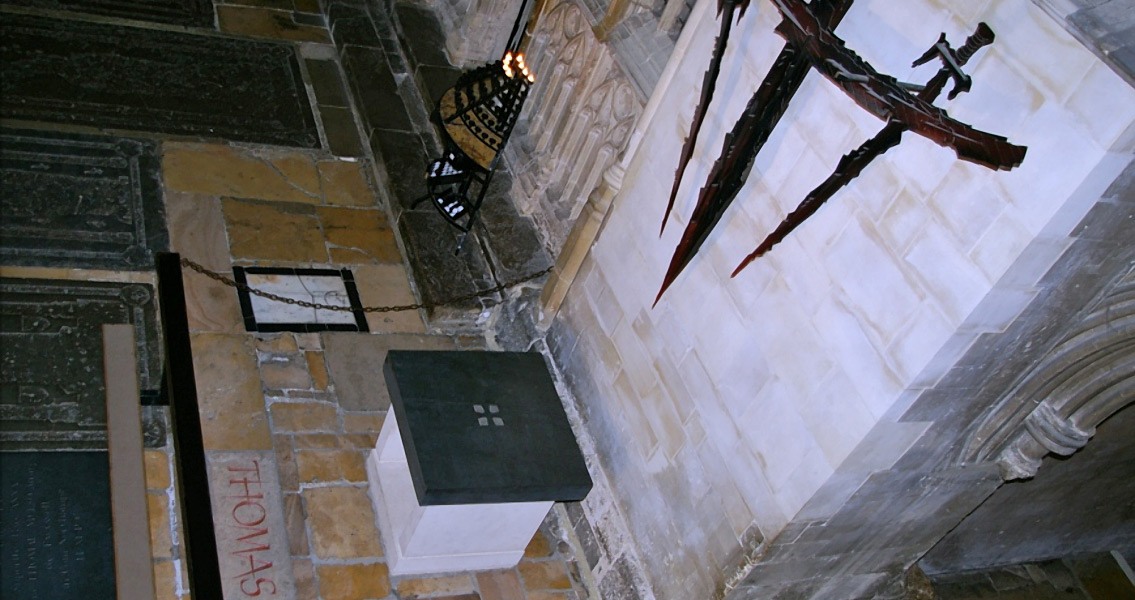<![CDATA[“What a parcel of fools and dastards have I nourished in my house, and not one of them will avenge me of this one upstart clerk.” King Henry II of England is reported to have pleaded to his court in 1170. The statement may have been a spontaneous expression of frustration, but a group of Henry's knights took it deadly seriously. On 29th December, 1170, Archbishop Thomas Becket, the subject of the king's plea, was brutally murdered at Canterbury Cathedral. Reginald Fitz Urse, William de Tracey, Hugh de Morville and Richard le Breton, four of Henry's knights, attacked Becket as he climbed the Cathedral stairs. Becket's body was left on the Cathedral floor, for the people of Canterbury to find the following morning. The parishioners tore of pieces of Becket's clothes and dipped them in his blood, believing it would bring them luck. The event proved a portent of the huge influence Becket would go on to have as a martyr. The heart of the conflict between Becket and Henry was one which would reappear again and again throughout the Medieval period and beyond: the balance of power between church and state. The Catholic Church held enormous influence in the twelfth century, offering salvation in a deeply religious society. On top of this, it held enormous economic influence through donations it received, owning huge swathes of land and property. Although the Church's power was rarely an issue when monarchs and the pope were in agreement, the Catholic Church had the ability to excommunicate kings, removing their legitimacy and creating a conflict over who should be obeyed. Henry sought to bring the church in England under the jurisdiction of the crown. To this end, he appointed Becket; a skilful diplomat and his friend, Archbishop of Canterbury in 1162. During Henry's reign the church had courts independent of the royal court. Any member of the church could decide to be tried for their crimes by the church court, something which often resulted in a much softer punishment. As well as undermining royal authority, Henry felt that the existence of the church courts was leading to a wave of lawlessness across England. Becket didn't become the supportive figure Henry had envisioned. He took his role as the head of the English church seriously, adopting a pious life far removed from the luxuries he'd enjoyed in the royal court. When Henry attempted to pass a law in 1164 which obliged those found guilty in church courts to be sentenced in royal courts, Becket refused to agree to it. Fearing the king's wrath, he fled abroad. Only feeling safe enough to return six years later, Becket soon came into conflict with Henry once more when he asked the pope to excommunicate the Archbishop of York, a powerful religious figure who supported the king. Although the king's exact words have been lost to history, it was this action which led King Henry to make his fateful plea in court. In death, Becket's significance didn't abate, and the former chancellor and archbishop continued to haunt the king. In 1173 Becket was canonised by the Catholic church, while the site of his death had been turned into a shrine, reflecting his martyr status. In 1174, Henry was forced to do a penance imposed by the pope, at Becket's tomb, allowing himself to be flogged by the monks there. The ordeal, culminating in the king spending a night in Becket's crypt, seemed to symbolise the ultimate failure of Henry's attempt to bring the church under royal jurisdiction. In 1220 Becket's bones were relocated to Trinity Chapel in Canterbury Cathedral. His final resting place later becoming a popular place of pilgrimage. Image courtesy of Wikimedia Commons user: Stryngford ]]>
Thomas Becket is Murdered, a Martyr is Born
